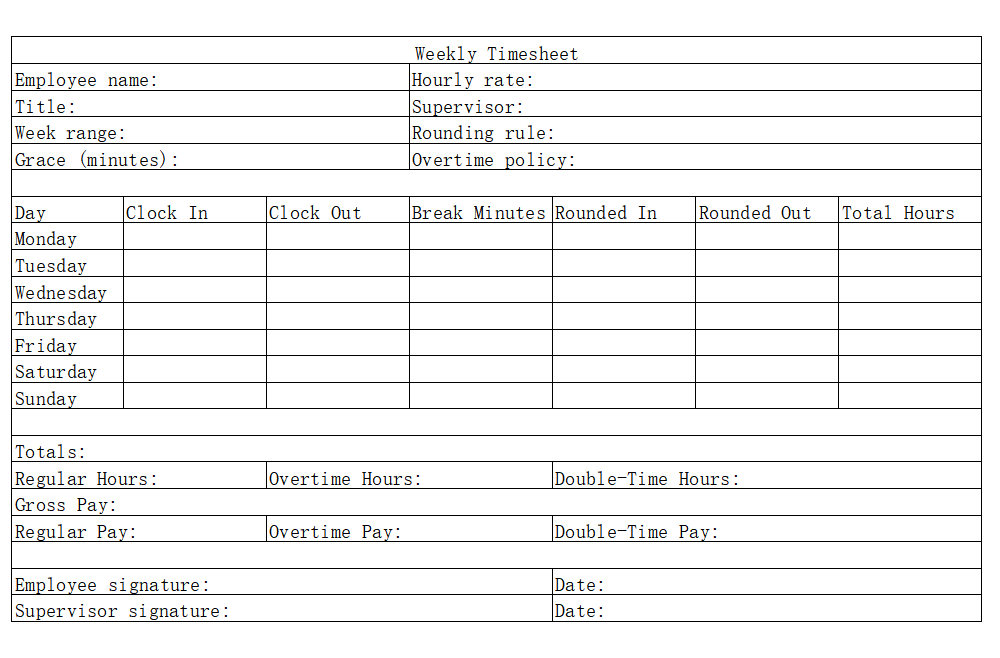- How does the time card calculator apply grace periods without breaking compliance?
- The time card calculator lets you set a grace threshold that trims only the first few minutes after the scheduled start. If an employee clocks in within the grace window, the punch snaps back to the top of the hour while everything beyond the limit receives standard rounding. This dual approach keeps the time card calculator compliant with federal and state rules that require neutral rounding while still supporting real-world lateness policies.
- Can the time card calculator manage overnight or multi-day shifts?
- Yes. When a shift crosses midnight, the time card calculator automatically extends the clock-out time into the next day and displays a (+1d) indicator so you can see how long the work period lasted. That way the timecard calculator captures camp crews, security rotations, and medical on-call assignments without forcing you to split records manually.
- What pay assumptions are exported from the time card calculator?
- Every spreadsheet created by the time card calculator lists rounding increments, grace settings, overtime thresholds, multipliers, and the active hourly rate. Colleagues reviewing the export know exactly which policy levers were active. This transparency keeps the timecard calculator trustworthy during audits, contract reviews, and collaboration with external accountants.
- How can teams customize overtime in the time card calculator?
- You can set weekly, daily, and double-time triggers directly above the schedule. The time card calculator recalculates totals instantly when those values change, making it easy to preview policy updates. Because the timecard calculator also stores pay multipliers, you can simulate union agreements, California rules, or client-specific billing premiums before making any commitments.
- Does the time card calculator integrate with other systems?
- The export produced by the time card calculator is intentionally clean so payroll suites, business intelligence platforms, and accounting systems can ingest it without reformatting. Many teams schedule automated pickups of the timecard calculator file, while others rely on copy-paste for quick reconciliation. Either way, the time card calculator becomes the single source of truth for accurate labor math.
